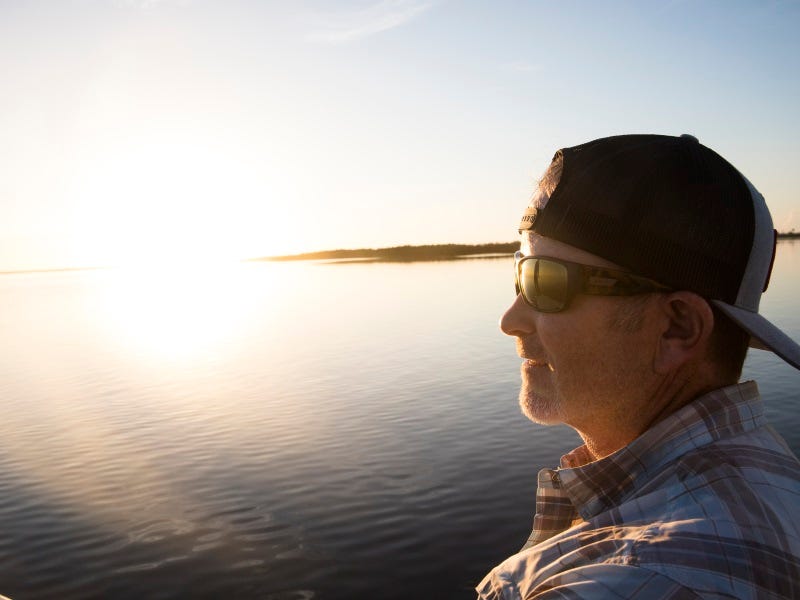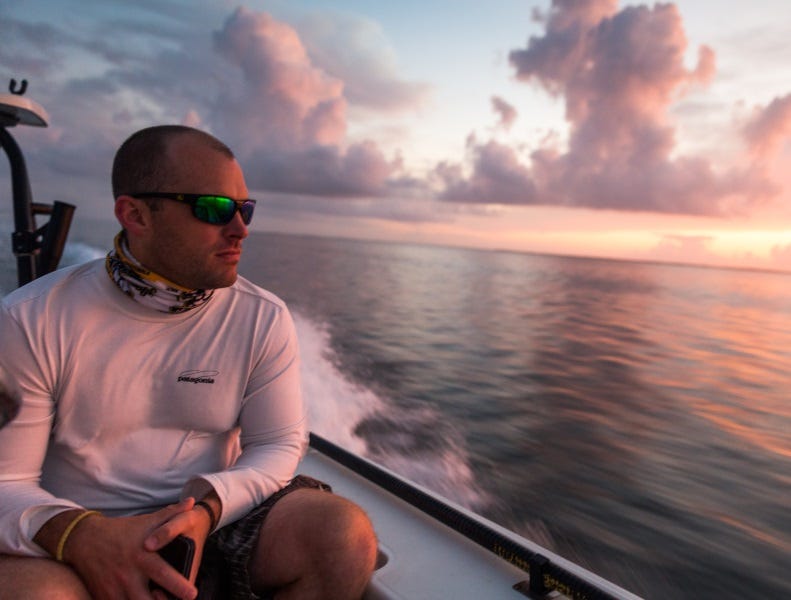Getting Under the Surface with Polarized Shades

By Kaylee Neu

Shades, sunnies, spekkies, solar shields . . . sunglasses. Everyone owns a pair. And all of us have our favorites. In fact, for most of us they're a tool we never leave the house without, especially if we’re headed to the Joe, or another area stream, to shoot laser-beam casts to the opposite bank. But do we know much about our little eye-protection friends? Let's dive into it, shall we?
I’m a fan of Costa sunglasses and I’m not the only one—we sell a lot of Costa’s here at North 40 Coeur d’ Alene. All are built by hand in Daytona Beach, Florida and are specifically designed for waters sports, including fishing, which means the lenses are polarized.
Polarization is the term used for reducing glare, from light reflecting off of water or other surfaces. Essentially, your polarized lenses kill the glare, which allows you to see into the water, which is beyond helpful when locating and casting to fish. This is also essential when navigating a boat down a bony river. In addition, quality polarized lenses block UV rays. I can't imagine what fishing without polarized glasses would be like. I suspect it'd be a lot like fishing blind in a hole you've never been to on a planet you’ve never seen.
Costa glasses also come with mirrored lenses. Most people think mirrored lenses are simply a fashion statement when, in reality, the color of the mirror determines many things. Costa's mirrors come in four colors; blue, green, sunrise silver, and copper silver. Blue is open reflective, best for bright, full-sun situations on open water and offshore, even in snow. Green enhances vision and contrast for fishing inshore and on the flats. Sunrise silver is suited to extended wear and is the perfect tool for dusk and dawn performance. Copper silver is suited for stream and river fishing. No matter which color you choose, that mirroring also improves clarity and definition.
Costa lenses also are hydrophobic. That means your lenses have a molecular bond coating on them, very similar to Rain X. Water just beads up and rolls right off instead of hanging out and being annoying. But it also makes the lens smudge-free and super easy to clean. So whether you’re landing a 20-pound steelhead, a 20-inch cutthroat, or buzzing around the marsh and looking for redfish, and there's water splashing around, your vision stays, mostly, clear.

Life Hack: If you don’t have a pair of hydrophobic lenses use Rain X on your lenses to achieve the same effect.
When picking a style of frame, don’t base your selection on color alone. Make sure the frames fit your face. Improper fitting sunglasses can ruin a whole day on the water. Too large or loose and the sun will bust in behind the lens filling your eyes with glare and UV rays. Too small and you’ll suffer from reduced ventilation, which means your lenses will fog. When trying on sunglasses make sure they don’t pinch around your head. In addition, the weight of the glasses should be distributed evenly between your nose and your ears. And don’t forget that your eyelashes shouldn’t touch the frames or lenses.
Another thing that goes hand-in-hand with a good pair of sunglasses, is a hat. I'm a fan of flat-billed hats—I don't know, maybe it’s a generational thing. But, when fishing, a flat bill won't cut it. A good fishing cap has a bill that’s bent just right and deflects sun from hitting your face and reaching your eyes. Keeping additional glare off your face increases the effectiveness of your glasses, plus it keeps the top of your head and your forehead from getting sunburned. Not to mention you can stick a few flies to it if you need to.
